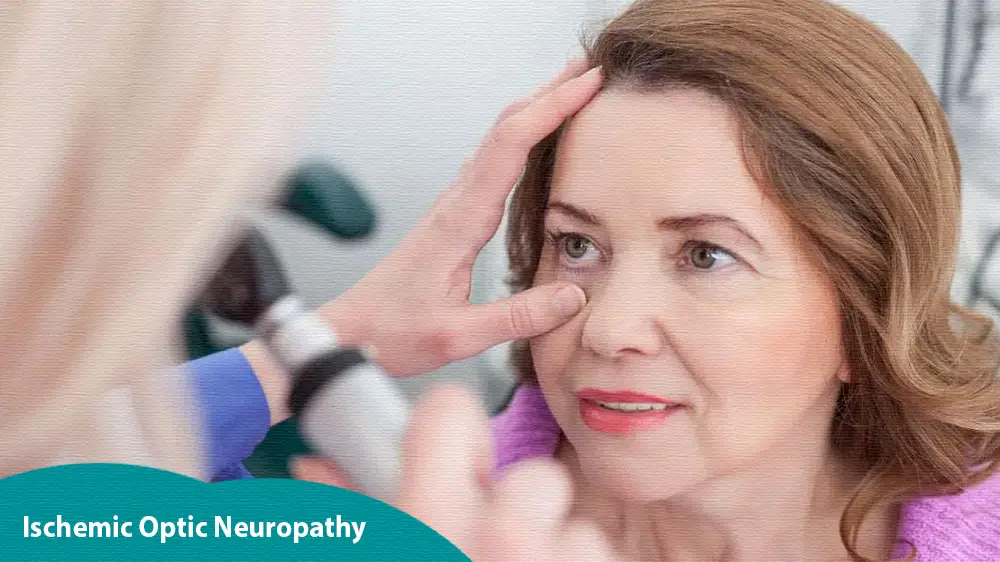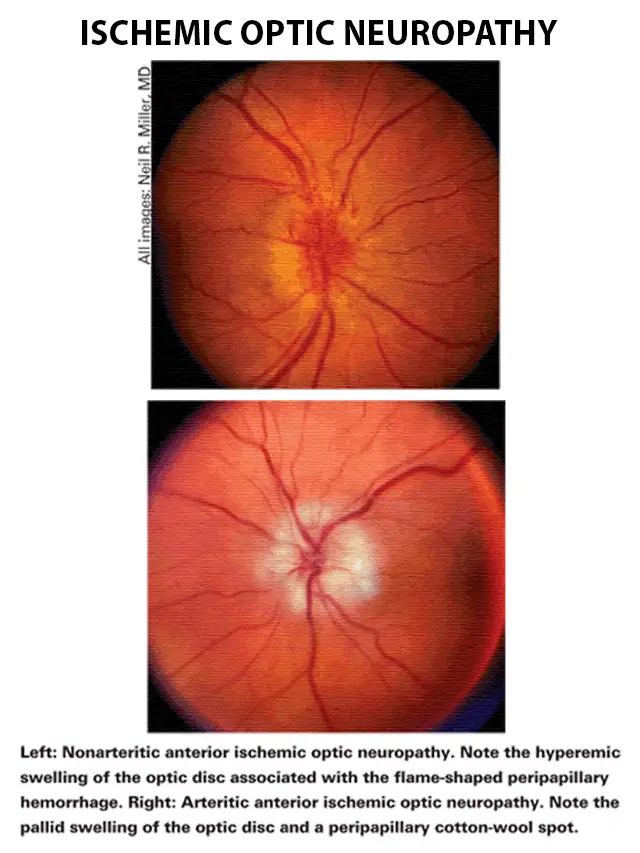
HEALTH NEWS
What is Ischemic Optic Neuropathy? A Man Became Blind Due to Alcohol
-
 Rahul Priydarss
Rahul Priydarss - February 12, 2024
This article details a study about Ischemic Optic Neuropathy, including symptoms, types, and treatment options. Learn to recognize the signs early and discover effective management strategies. Stay informed about this vision-threatening condition to protect your eye health.
What happens if A drunk man sleeping face down:
– A 44-year-old man became partially blind at night after sleeping face down after being drunk. Although this seems like a common occurrence, this case was different as the Taiwanese man lost his vision in one eye, and that too was blinded. At emergency care, the unnamed patient complained of pain and blindness for three days. He said his symptoms appeared after a night of drinking and taking insomnia medication.

Table of Contents
– After drinking uncontrollably, the man remained unconscious for three hours in a position that caused immense pressure on his eyeball. During the doctor’s examination, it was observed that his left pupil was not reacting to light and was not showing any movement. The affected eye was swollen and the patient was diagnosed with ophthalmoplegia – paralysis of the eye muscles.
– Doctors said that the subconjunctival blood vessels found under the transparent surface of the eye burst due to pressure on the eye. This caused the tissues around the eye to swell, causing bleeding. The patient was also diagnosed with Ischemic Optic Neuropathy and Choroidopathy which is a big problem for him.
– According to the news report, these symptoms appeared in the person after a night out when he had gone to drink alcohol and was taking insomnia medicine. However, he remained in a position for three hours that caused extreme pressure on his eyeballs, resulting in no movement of the pupils. Later, his affected eye became swollen and he was diagnosed after detailed tests and investigation.
– Ophthalmoplegia, or paralysis of the eye muscles. According to doctors, he suffered severe injury to the sub-conjunctival blood vessels located just below the transparent surface of his eye, which burst due to the pressure on the eye.
What Is Ischemic Optic Neuropathy:
Doctors said that the subconjunctival blood vessels found beneath the transparent surface of the eye burst due to pressure on the eye. This caused the tissues around the eye to swell, causing bleeding. The patient was also diagnosed with Ischemic Optic Neuropathy (ION) and choroidopathy.
Ischemic optic neuropathy (ION) refers to a medical condition in which there is damage to the optic nerve due to reduced blood flow. The human optic nerve transmits every minor or complex visual information from the eye to the brain. When blood flow to the optic nerve is obstructed, it can lead to inadequate oxygen and nutrient supply, resulting in impaired or loss of vision. This condition is called “ischemic” because it involves inadequate blood supply, which deprives the optic nerve of essential nutrients and oxygen, ultimately causing loss of function.

Types Of Ischemic Optic Neuropathy (ION):
It is important to understand the difference between these two types of ischemic optic neuropathy for accurate diagnosis and appropriate management.
1- Anterior Ischemic Optic Neuropathy (AION):
- AION occurs when blood flow to the front part of the optic nerve is disrupted.
- It usually results in sudden, painless vision loss, often affecting only one eye.
- Commonly associated with conditions such as giant cell arteritis or atherosclerosis.
- Individuals may experience visual loss without any warning signs or preceding symptoms.
- Diagnosis includes a comprehensive eye examination and imaging tests to determine the extent of optic nerve damage.
- Treatment aims to address the underlying cause and manage symptoms, which may include medications or lifestyle changes.
2- Posterior Ischemic Optic Neuropathy (PION):
- In PION there is reduced blood flow to the posterior part of the optic nerve.
- Unlike AION, PION often causes bilateral vision loss, affecting both eyes simultaneously.
- Associated with systemic conditions such as hypotension, diabetes, or optic nerve compression.
- Diagnosis usually involves a thorough evaluation of the medical history, physical examination, and imaging tests.
- Treatment strategies focus on addressing the underlying cause of low blood flow and may include medication adjustments or surgical intervention.
- Prognosis varies depending on the severity of optic nerve damage and the effectiveness of treatment interventions.
- It is important to understand the difference between these two types of ischemic optic neuropathy for accurate diagnosis and appropriate management.
Symptoms Of Ischemic Optic Neuropathy (ION):
It is important to note that the severity and combination of symptoms can vary widely among individuals with ION. Some people may experience only minor vision changes, while others may face significant challenges due to profound vision loss. Prompt evaluation and diagnosis by a health care professional is important to determine the cause of vision symptoms and initiate appropriate treatment to preserve vision and prevent further damage to the optic nerve.
Minor Symptoms:
- Blurry vision: Individuals may experience slight blurring or blurring of their vision, especially in one eye.
- Difficulty recognizing colors: Some people may notice subtle changes in their ability to accurately recognize colors.
- Peripheral vision loss: Peripheral vision may be slightly reduced, affecting the ability to see objects or movement at the edges of the visual field.
- Eye problems: In some cases, there may be minor problems, such as feeling pressure behind the eyes, mild pain, or burning sensation.
- Increased sensitivity to light: Individuals may be more sensitive to bright lights or glare.
Major Symptoms:
- Sudden vision loss: One of the major symptoms of ION is sudden, significant vision loss, which often occurs without warning.
- Partial or complete blindness: In severe cases, individuals may experience partial or complete blindness in one or both eyes.
- Pain or discomfort: Although not always present, some individuals with anterior ischemic optic neuropathy(AION) may experience significant pain in the eyes, especially with eye movement.
- Visual field changes: Visual field defects, such as missing areas or “blind spots” in the field of vision, can affect peripheral or central vision.
- Difficulty with depth perception: Decreased depth perception or difficulty judging distances accurately can be a major symptom of ION.
Treatment Of Ischemic Optic Neuropathy (ION):
Treatment of ischemic optic neuropathy (ION) generally focuses on addressing the underlying cause of reduced blood flow to the optic nerve and managing associated symptoms. Although there is no specific cure for ION, several approaches can help improve vision and prevent further damage. Here are some common treatment strategies:
Addressing underlying medical conditions:
If ION is secondary to conditions such as high blood pressure, diabetes, or high cholesterol, it is important to manage these underlying health problems. This may include lifestyle changes such as adopting a healthy diet, getting regular exercise, and taking medications prescribed by a healthcare provider.
Medicines:
In some cases, medications may be prescribed to improve blood flow to the optic nerve or manage symptoms such as pain or swelling. Examples include vasodilators. The list of common vasodilators includes ACE inhibitors such as benazepril or lisinopril. ARBs such as losartan. Diltiazem and corticosteroids such as CCBs Corticosteroid medications include cortisone, hydrocortisone, and prednisone. They are useful in treating eye disorders, inflammatory bowel disease, and other conditions, and anti-inflammatory drugs such as ibuprofen, diclofenac, aceclofenac, and indomethacin. The choice of medication depends on the individual’s specific condition and medical history.
Lifestyle change:
Quitting smoking, maintaining a healthy weight, and controlling blood pressure and cholesterol levels are essential in managing ION and preventing further complications. These lifestyle modifications may help improve overall heart health and reduce the risk of repeat ischemic events.
Optic nerve decompression surgery:
In rare cases where significant optic nerve compression contributes to the ION, surgical intervention may be considered. The purpose of optic nerve decompression surgery is to reduce pressure on the optic nerve and improve blood flow. However, the effectiveness of this procedure in improving vision outcomes remains uncertain, and it is usually reserved for specific cases.
Low vision rehabilitation:
For individuals experiencing significant vision loss due to ION, low vision rehabilitation programs can help optimize remaining vision and improve quality of life. These programs provide training in adaptive strategies, assistive devices, and techniques to perform daily tasks independently despite visual impairment.
Regular monitoring and follow-up:
Individuals with ION require regular monitoring by an ophthalmologist or neurologist to assess changes in vision and optic nerve function. Periodic eye examinations, imaging tests, and visual field testing may be recommended to track disease progression and response to treatment.
– It is important to note that the effectiveness of treatments for ION varies depending on factors such as the underlying cause, the severity of the optic nerve damage, and the overall health of the person.
FAQs about Ischemic Optic Neuropathy:
A1: Ischemic optic neuropathy occurs when the optic nerve does not receive an adequate blood supply, leading to damage and vision loss. Various factors, including medical conditions and lifestyle habits, can contribute to this insufficient blood flow.
A2: While some cases of ischemic optic neuropathy may result in partial vision recovery with treatment, the extent of reversibility depends on factors such as the severity of nerve damage and the underlying cause.
A3: In severe cases, ischemic optic neuropathy can result in permanent vision loss. Early detection and appropriate management are essential for minimizing the risk of irreversible damage.
A4: Diagnosis of ischemic optic neuropathy typically involves a comprehensive eye examination, imaging tests, and evaluation of medical history and risk factors. Blood tests may also be conducted to identify underlying health conditions contributing to optic nerve damage.
A5: Treatment for ischemic optic neuropathy aims to manage underlying conditions, alleviate symptoms, and preserve vision. This may include medications, lifestyle modifications, and in some cases, surgical interventions.

-Please remember, to always consult with healthcare professionals or Doctors for personalised advice related to medical conditions.
Conclusion:
Real-life case studies provide valuable insight into the experiences of individuals living with Ischemic Optic Neuropathy. These examples highlight the diverse manifestations of the condition and the importance of tailored treatment approaches based on individual needs and circumstances. The reason why alcoholics become blind due to drinking is that when they lie on their faces, there is more pressure on the pupils of their eyes.




